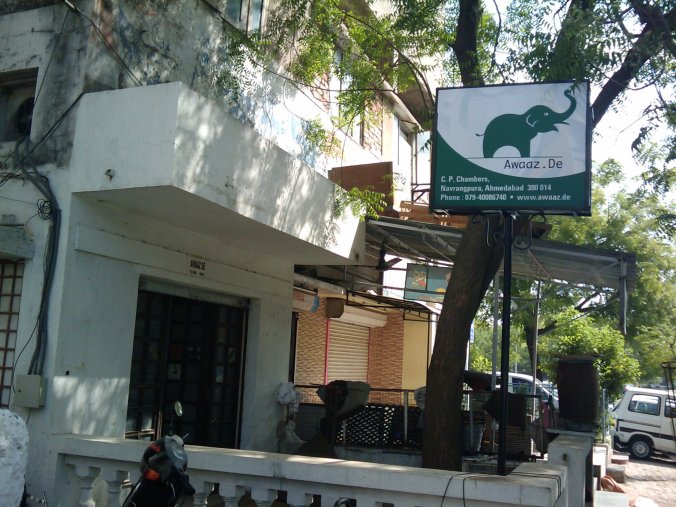As part of our Delhi visit organised by the British Council, we had the opportunity to visit some social enterprises in the field. Tucked away behind some narrow streets and burnt-out cars sits Swechha, home to ‘India’s first upcycled office’. And what an office it is! Generally I can get quite skeptical of the term ‘upcycling’, as it is to ‘recycling’ what ‘vintage’ is to ‘second hand’, but in this case there are some truly innovative ideas at play, and the end result wouldn’t look out of place in Brooklyn or Berlin. Check out the video of the team building said office below, with mandatory dubstep and some pretty un-Health and Safety welding…
Sweccha are about more than just cool office space though, as they work as a hub from which a whole range of different enterprises spin-off. One of their newest ventures, Lunchbox 17, is a project where women from slum villages prepare beautiful, delicious and healthy handmade lunches to be delivered to your desk by yellow scooter. According to this review, the results are pretty special.
We also had a tour of another Swechha venture, Green the Gap. Green the Gap also focuses on upcycling, using waste gathered from a range of sources (including knowing the area where the luxury hotels dump their bottles of Grey Goose). Like the office, the end products were pretty special, to the extent that I parted with a few too many rupees for some posh candles and a bag made out of tyres. What is most striking is not just the good work on show here, and the commitment to high quality workmanship, but just how ready these products are for the international market. Take the candles, for example, made from Johnnie Walker bottles, I paid approximately (look away parents – you might be seeing these candles again…) £4.50 each for them. This price represents a significant enough mark-up on the cost price of materials to enact real social change amongst the people who made the candles, however I don’t feel I’m exaggerating by saying that these products could fetch at least £20 in John Lewis.
By focusing on upcycling, Green the Gap are not only reducing waste in Delhi, but providing employment opportunities for people in need of work. By adding an eye for design and standards of quality control on a par with high-end products they are also elevating themselves above the level usually associated with upcycling, and commonly found on websites like ethical superstore. I would argue that what we are seeing here is the emergence of ‘premium upcycling’, a term that should probably be followed with “coming to a glossy design mag near you”…






